
Magento Designer Tips: Enhance Your Online Store
A Magento designer specializes in designing and creating visually appealing and functional Magento websites. Magento, an open-source e-commerce platform, empowers businesses of all sizes to create engaging online stores that attract customers. This guide explores Magento design and the impact of an efficient designer on an online store's success.
Key Takeaways
-
A Magento designer has specialized skills to create visually attractive and efficient e-commerce websites using Magento.
-
Magento offers flexibility and scalability for businesses of all sizes, enabling them to create engaging, customized online stores.
-
A skilled Magento designer can significantly impact an online store's success by enhancing its visual appeal, functionality, and marketing.
-
Businesses can leverage the power of Magento to attract and retain customers, ultimately driving sales and growth opportunities.
-
Understanding the role and value of a Magento designer is crucial for any business seeking to establish or elevate its online presence.
What Does a Magento Designer Do?

A Magento designer creates and implements the website's front end, which is the visible part users see when visiting an online store. This involves creating layouts, adding graphics, selecting colors and fonts, and ensuring the website's design aligns with the brand's image.
Roles and Responsibilities of a Magento Designer
A Magento designer plays a crucial role in developing an online store. Their responsibilities include:
-
Understanding the brand's vision and goals to create a Magento design that aligns with it.
-
Collaborating with other team members, such as developers and marketers.
-
Developing wireframes, mockups, and prototypes to visualize website layouts.
-
Selecting colors, fonts, images, and graphics that represent the brand's image and appeal to the target audience.
-
Ensuring the website's design is responsive and compatible with various devices.
-
Testing the website's design for user-friendliness and making necessary adjustments.
-
Staying updated on current design trends and incorporating them into the website's design.
Skills Required to Become a Magento Designer

Designing an engaging and functional Magento website requires a combination of technical knowledge and creativity. Some essential skills needed to become a successful Magento designer include:
-
Proficiency in HTML, CSS, and JavaScript.
-
Knowledge of Adobe Creative Suite or other design tools.
-
Understanding of web design principles and best practices.
-
Creativity and an eye for aesthetics.
-
Attention to detail and ability to multitask under pressure.
Steps of a Magento Website Design
1. Magento Stack Requirements
Operating System
-
Magento 1: Linux x86-64
-
Magento 2: Linux-based OS like RedHat Enterprise Linux (RHEL), CentOS, Ubuntu, Debian, etc. are supported.
Note: Magento will not work on Windows and Apple OS.
Web Server
-
Magento 1: Apache 1.3.x, 2.0.x, 2.2.x, 2.4.x, Nginx 1.7.x or above
-
Magento 2: Apache 2.0, Nginx 1.18
Memory
-
Magento 1: At least 512MB or more RAM.
-
Magento 2: At least 2GB or more RAM.
Database
-
Magento 1: MySQL 4.1.2 or above.
-
Magento 2: MySQL 5.6, 5.7 and 8.0 (for Magento 2.4.x)
PHP
-
Magento 1: PHP 7.2 or above and 8.0 or above (for Magento 2.4.x)
-
Magento 2: PHP 5.4 or above.
Security
For both Magento 1 and Magento 2:
-
Transport Layer Security (TLS) is for Paypal integration and repo.magento.com.
Mail Server
For both Magento 1, and Magento 2:
-
Mail Transfer Agent (MTA)
-
Simple Mail Transfer Protocol (SMTP) server
Those were all the requirements for creating an eCommerce store with Magento design. You can keep these requirements in mind as per the Magento version you’re choosing and then proceed further to build your store.
2. Deciding a Domain Name and Magento Hosting
Choosing a domain name and Magento hosting is the second step in Magento eCommerce development. Find a hosting provider that meets your needs and supports your Magento stack requirements. Ensure your provider offers fast and secure services to protect against security breaches and provide a smooth customer experience. Choosing managed Magento hosting is important for a robust, seamless Magento design experience.
3. Download and Install Magento
To begin your Magento eCommerce development journey, the next step is installing Magento. Create an account on Adobe's website and follow the installation process.
4. Configure Store Settings
Now, you need to do some basic Magento store settings.
To do this, open your Magento dashboard and go to Stores > Configuration > General. Configure basic settings: Country, State, Timezone, Store Name, Phone Number, Address, and more to make your Magento site design more professional.
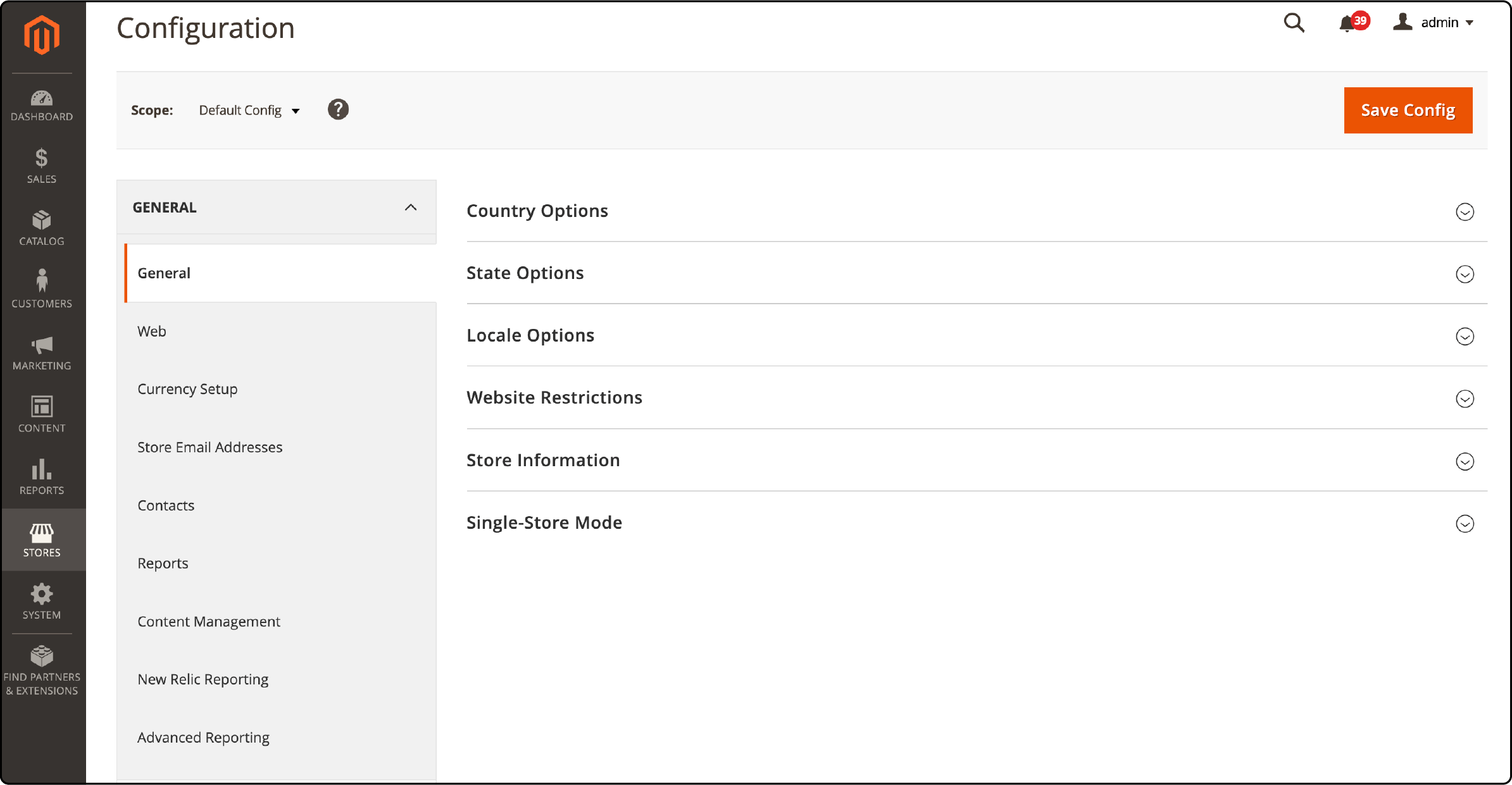
5. Select A Theme to Design Your Magento Store
-
Stick With The Default Theme: There are 2 default Magento themes: Luma and Blank. You can start with either if you prefer not to install or invest in a new Magento theme. Customize them to align with your branding.
-
Opt For A New Theme From The Marketplace: If you're unhappy with the default Magento themes, you can find new ones on the Magento marketplace or platforms like Envato or Themeforest.
6. Install Extensions
Once you have created your Magento store, you can enhance its functionality by installing Magento integrations. To start, assessing your specific requirements and selecting the necessary Magento extensions for your store is advisable. Once you have identified your needs, install the chosen extensions in your store.
7. Create or Import Products
Once you have installed the extensions in your online store, you can create or import products for your Magento eCommerce development.
Find our complete guide on creating Magento products and importing Magento products.
8. Setup Payments and Shipping Options
Once you've brought in your products, it's time to establish payment options and shipping methods.
9. Preview and Publish Your Store
Before launching your website in the virtual marketplace, ensure everything is in place. Test your website for speed, responsiveness, checkout process, reporting, and more. Once everything works fine, you can publish your Magento store.
Key Features of an Efficient Magento Design
1. Dynamic Blocks
Dynamic blocks in Magento websites are content pieces that can be automatically updated based on rules set by the administrator. Store owners can use them to personalize their websites for individual customers or offer special promotions to specific customer segments.
Dynamic blocks in Magento let you customize content and layout. Have control over the size, orientation, and order of each element. With a simple drag-and-drop interface, modifying the look of dynamic blocks is easy while maintaining their original functionality. Dynamic blocks, commonly used for product-related sections like feature highlights or comparison tables, require no coding knowledge.
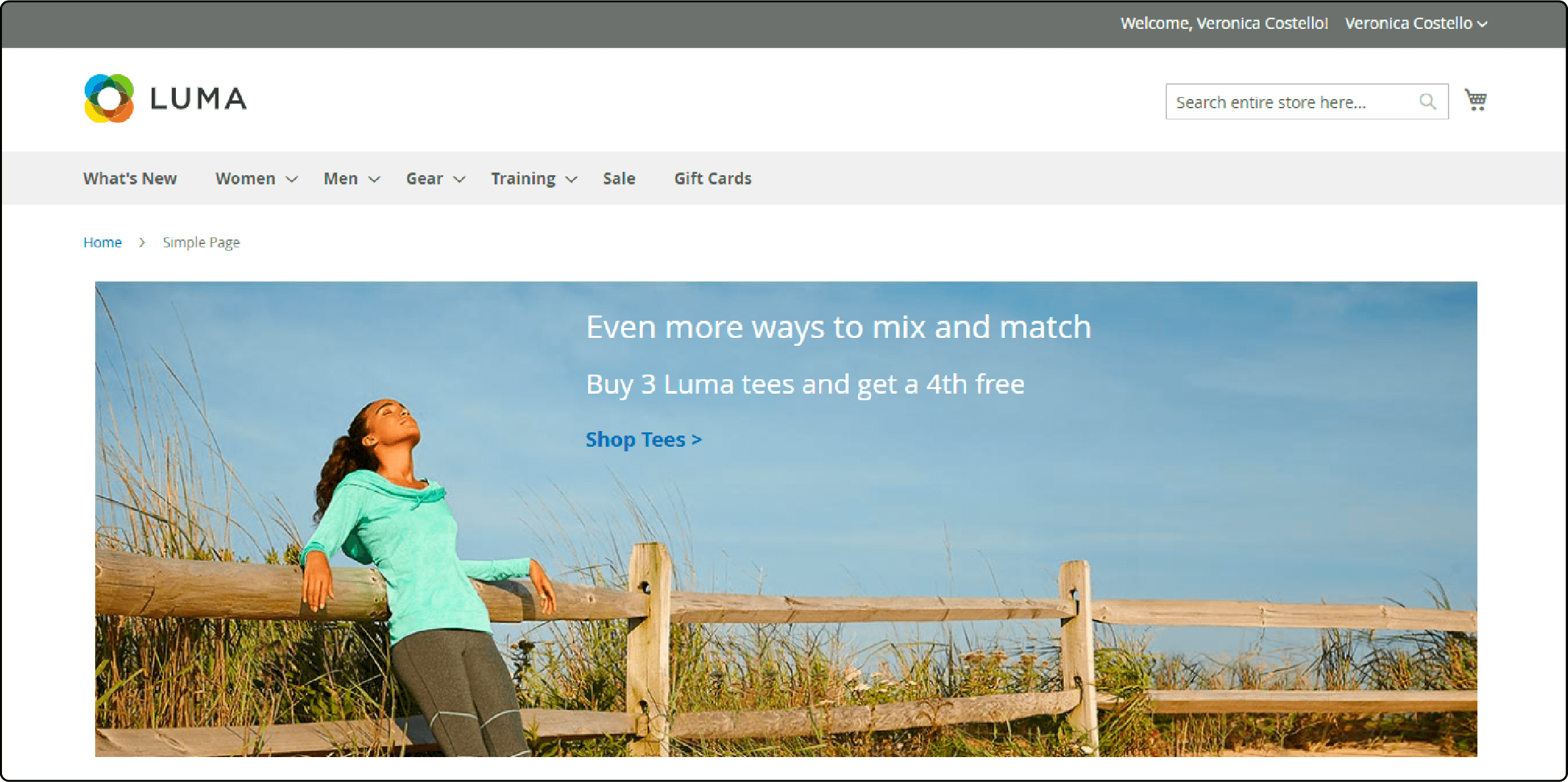
2. Gift Registries
Magento gift registries allow customers to create and manage lists for special occasions like weddings or baby showers. Customers can add, remove, and modify items, while friends and family can access the list via an email link or the Magento gift registry search widget. Shoppers can conveniently add items from the registry to their cart. After placing an order, the registry is automatically updated to reflect the purchased items and quantities.
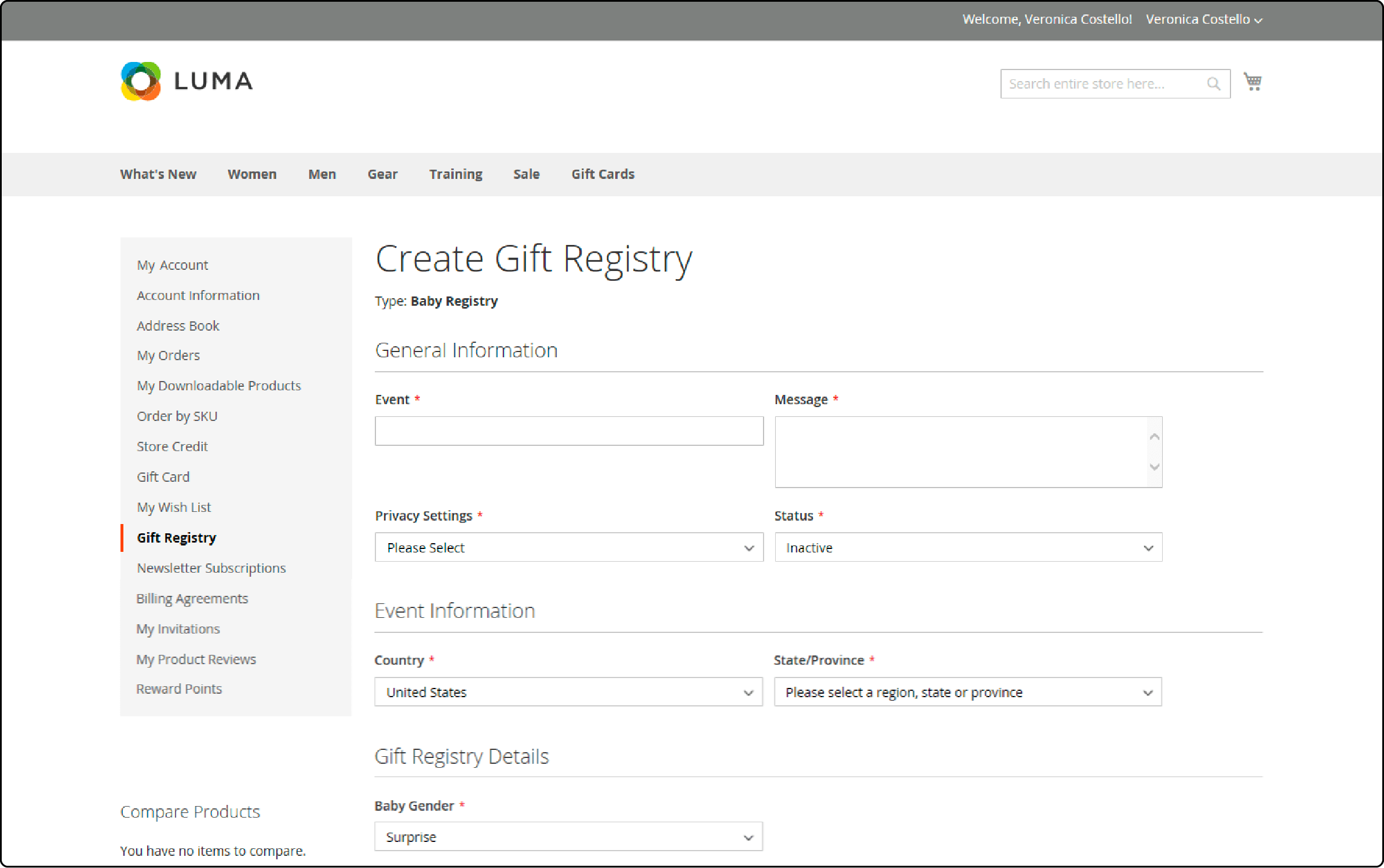
3. Private Sales & Events
Private sales in Magento offer special access to selected products or services in your e-store. It's most beneficial for catering to VIP customers. Manage event access, personalized greetings, and offer discounts to create a memorable impression.
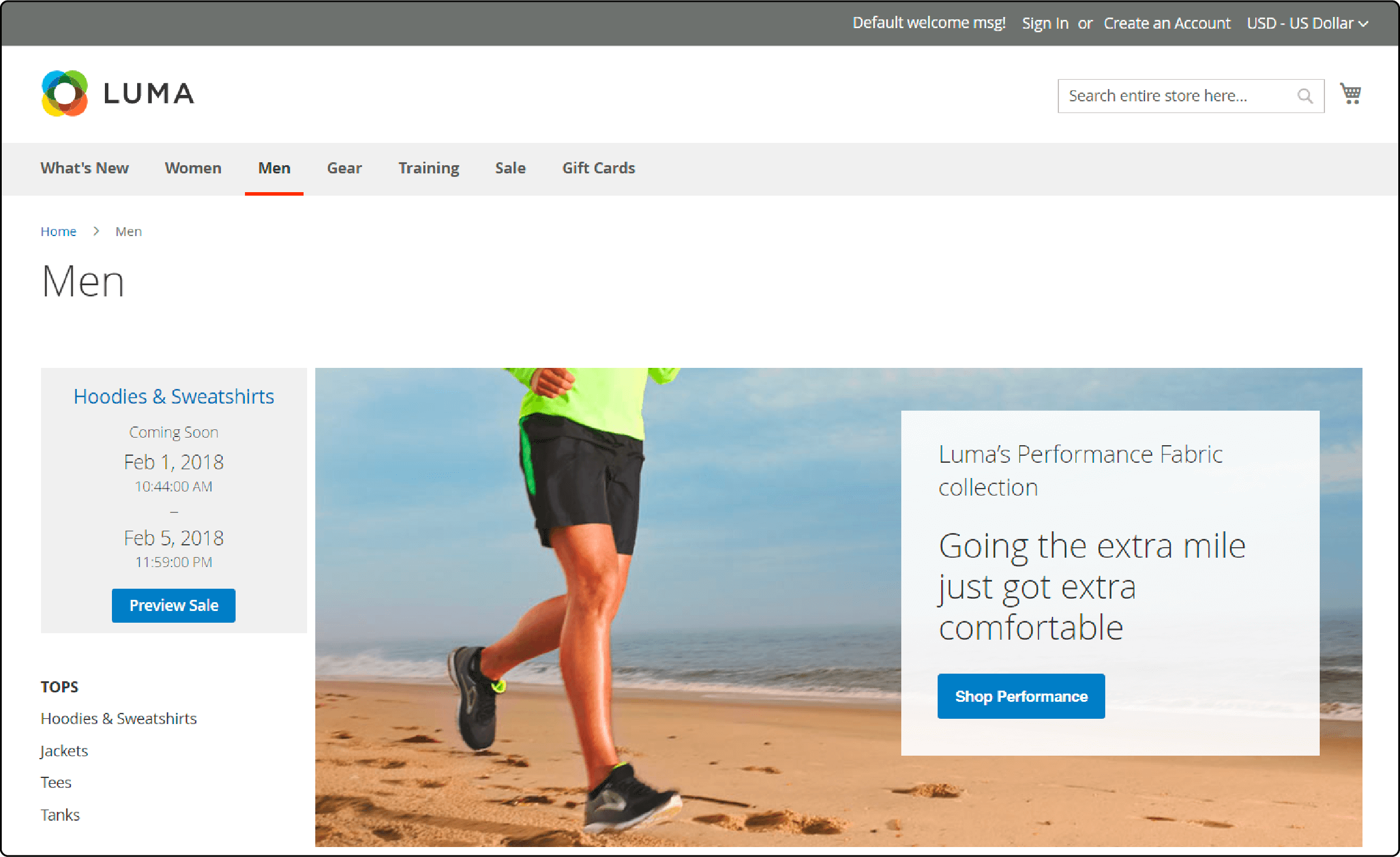
The private sales feature enables you to create an exclusive shopping experience for customers by customizing user groups. This includes giving them early access to new product launches, limited-time discounts, and more.
The event ticker feature enables Magento designers to showcase a countdown clock for the event, allowing customers to send exclusive invitations to their friends. Additionally, private sales reports can be used to track the invitation conversion rate.
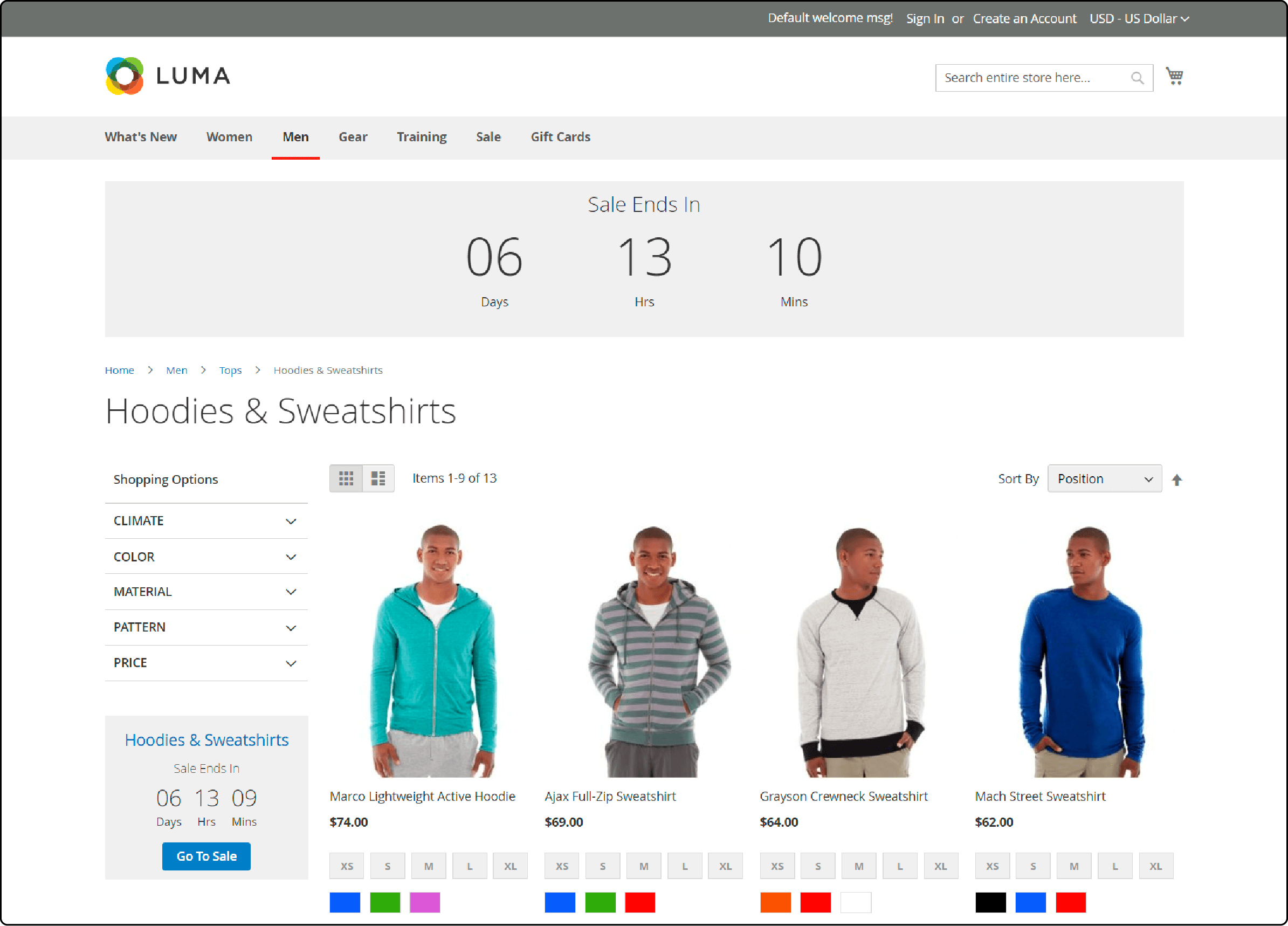
4. Rewards & Loyalty
Magento's rewards and loyalty feature allows customers to earn points by purchasing or submitting product reviews. These points can be redeemed for discounts or special offers. Magento's cart price rule enables you to offer discounts or free items based on criteria tracked by Magento. This feature boosts sales through promotions and provides valuable customer behavior insights through Google Analytics.
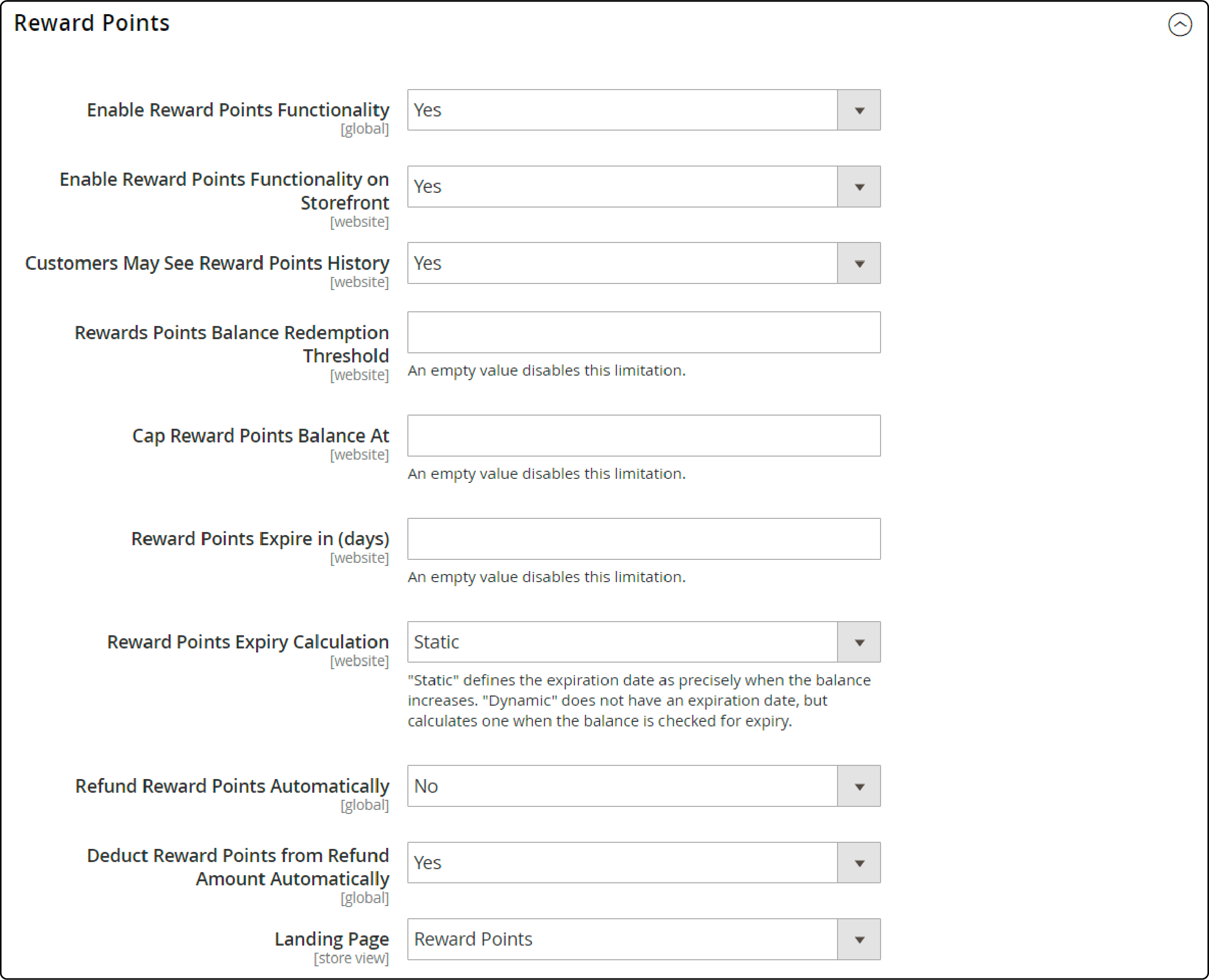
5. Gift Cards
The gift card feature in Magento enables customers to buy electronic or physical gift cards. E-gift cards can be personalized with a message and sent via email, while physical gift cards can be printed and sent by the customer.
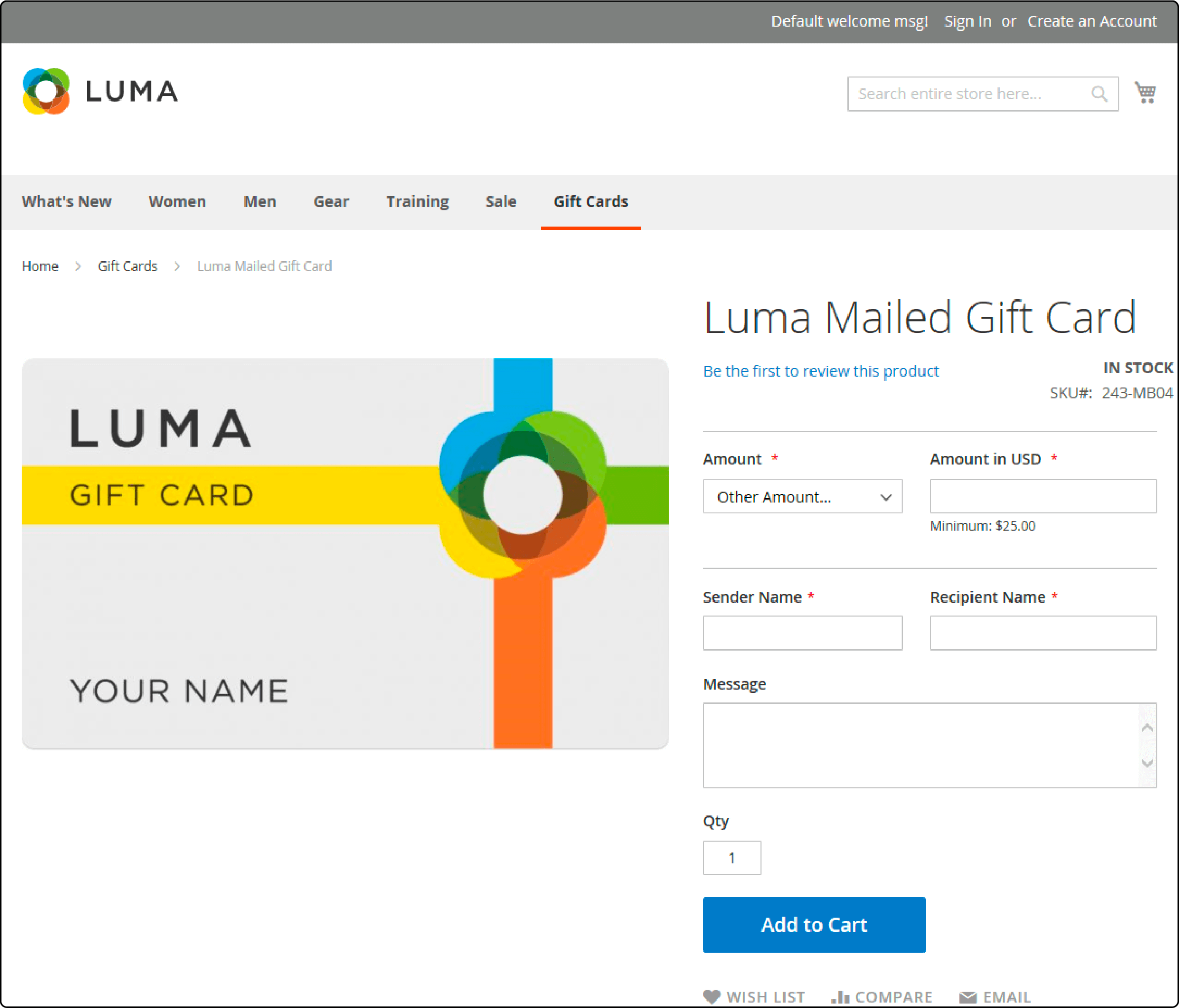
As a store owner, Magento's gift card accounts feature lets you track gift card balances and usage.
9 Ways a Magento Designer Can Enhance Your eCommerce Site
1. Advanced functionality
Magento web design offers endless possibilities and features that can amaze you. But remember, prioritize functionality for your users. Simple functionality and seamless navigation are highly valued. However, functionality varies for different audiences, so research their expectations. Understand your users' desired experience for your industry and website category.
2. Search engine optimisation
Implementing search engine optimization (SEO) is essential for effective marketing in search results. While it requires time and training, the organic traffic it generates is invaluable. SEO practices include proper meta descriptions, keyword optimization, user-friendly website design, etc. Balance is key - prioritize user experience while incorporating SEO elements.
3. Mobile-first design approach
Most internet users access websites via mobile devices. They seek a mobile-friendly experience that resembles desktop usage. To create an engaging website, consider the smaller screen, optimize for speed, avoid pop-ups, streamline design, and use clear fonts.
4. Choose the right Magento theme
Choosing the right theme is important in Magento website design. It should be responsive and customizable. Mobile-friendliness and integration capability are also important. Popular themes with seamless third-party tool integration are recommended for an effective ecommerce store.
5. Optimize your Magento images
High-quality images engage users and capture attention, especially in ecommerce. Optimize photos to reduce file size and improve website loading time. Editing software enhances product photos by adjusting lighting and fixing imperfections. Magento offers Fastly IO to optimize images for different screen resolutions.
6. Match your checkout process to your customers
Ecommerce stores must choose between single- or multi-step checkout processes. No universal answer exists, as the best option depends on industry and user interaction. Consider payment preferences, refund frequency, and multi-currency handling. Research target audience and competitors for optimal Magento checkout process.
7. Personalize the customer experience
A quick, easy, and intuitive shopping experience is crucial for customer conversion. Personalization options like discounts and email notifications for related products enhance the customer journey. Brainstorm and consider your target audience to make each customer feel like they are your only customer. The goal is to provide a seamless and personalized shopping experience.
8. Design your CTAs to stand out
Online businesses must provide clear instructions for customers to navigate the customer journey. Eye-catching calls-to-action (CTAs) on Magento 2 landing pages play a key role. Don't assume customers know what to do next. Place CTAs in multiple locations, keep them straightforward, and ensure operational links and easy website navigation.
9. Optimize the customer journey
Magento empowers the creation of stunning front-end websites. Its true strength lies in seamless integration with essential tools and platforms for scalable ecommerce stores. Store owners should leverage all features to provide a unified customer journey, guiding them through awareness, interest, and decision stages. Optimize the website, personalize the shopping experience, and maintain brand consistency via thoughtful integration of third-party tools.
FAQs
1. What customization does a Magento designer have for frontend and backend programming?
A Magento designer has the expertise to customize both frontend and backend programming. They can enhance user interface (UI), refine Magento UX performance, and integrate plugins and modules to meet business solutions and client specifications.
2. How can a Magento designer contribute to my brand's growth and revenue?
Magento designers are experts in developing ecommerce solutions to drive growth and revenue. They leverage their knowledge to enhance user experiences, manage data migration, and streamline operations. They all contribute to increased conversions and customer management efficiency.
3. How cost-effective is hiring a Magento designer for my project?
Hiring a Magento designer is a worthwhile investment. They provide expert web development and maintenance and strategize to optimize ecommerce solutions. Costs may vary depending on the project scope. Still, the potential return on investment makes it a smart choice for businesses.
4. What kind of support can I expect from a Magento designer during and after the project?
Magento designers provide robust support during and after project completion - from designing your logo from scratch to managing regular updates to troubleshooting any issues. They are committed to ensuring your ecommerce platform runs smoothly at all times.
5. Can a Magento designer manage data migration for my ecommerce store?
Yes, Magento designers are proficient in data migration. They can seamlessly transition your existing data to the new Magento platform without compromising data integrity or causing downtime, ensuring a smooth transition for your ecommerce operations.
6. How can a Magento designer help startups launch their brand in the ecommerce world?
Magento designers provide tailored ecommerce solutions for startups to launch their brands in the digital marketplace. They work closely with clients to understand their unique needs and develop, integrate, and optimize a Magento platform that reflects their brand identity, attracts prospective customers, and drives sales.
7. What are the advantages of collaborating with a Magento designer on ecommerce projects?
Working with a Magento designer on ecommerce projects offers several advantages. Companies benefit from a comprehensive, scalable solution that grows with their business expert insight into ecommerce trends and strategies. Expert designers provide a user-friendly platform that enhances customer engagement and conversion rates. All of this contributes to greater brand visibility and increased revenue.
Summary
A Magento designer's design, development, and optimization skills make them valuable assets for an online store. Investing in them is key for a seamless, engaging, and profitable ecommerce operation. With managed Magento hosting services, you can optimize your Magento platform for better speed, security, and overall user experience.



